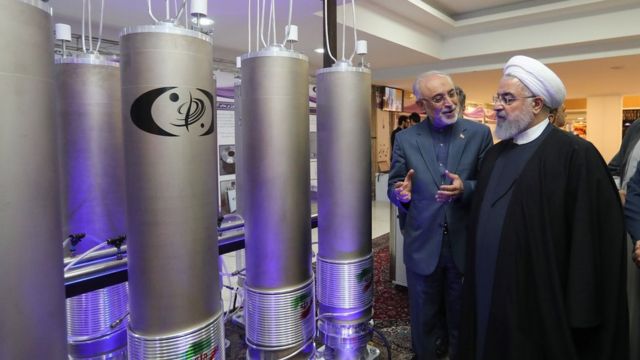On April 16, the Head of the Iranian Atomic Energy Organization, Ali Akbar Salehi, announced Iran's hourly production of 9 grams of uranium enriched to 60%. This step provoked Western countries participating in the Vienna talks.
A quick response
Arguably, Iran has been preparing to enrich uranium at this rate for some time, as it announced the installation of more advanced centrifuges in the Natanz reactor, such as IR4, IR6 and IR2M, in addition to pumping gas into the new IR9 devices. However, it was keen to postpone that step until the end of the talks currently taking place in order to save the nuclear deal. More precisely, Tehran was probably considering raising the level of enrichment to 60% to be a bargaining chip, which it preferred to postpone until the results of the current talks, and perhaps the non-public understandings with Washington, become more evident.
Senior Iranian officials had previously hinted at using this course of action as part of their keenness to add pressure on the Biden administration. On February 22, Ali Khamenei stated that Iran is capable of enriching uranium to the level of 60 %, which could not be hinted at unless Iran actually has the capabilities and the propensity to take that step.
However, on April 12, the attack on Natanz reactor, which resulted in disrupting an unlimited number of centrifuges, pushed Iran to changing its stance towards converting these warnings into procedural steps on the ground by actually raising the level of enrichment to 60%.
Three goals
Through this step Iran sought to achieve three main goals: First, Iran sought to send a direct message to the Western powers, particularly the US, along with Israel, which Tehran held responsible for the bombing. Iran's message was that the goal of slowing down the movement of the Iranian nuclear program in one of its most prominent facilities will not be achieved, and that, on the contrary, this will result in increasing the rate of uranium enrichment from 20% to 60%.
The second goal was to cover up the new input imposed by the recent bombing, most notably the continuous security breach that Iran is exposed to, which cuts through one of its most vital institutions, the Natanz facility, especially since the same facility had been exposed to a similar explosion last July.
Third, Iran seeks to exert the highest levels of pressure on Biden’s administration by warning that failure to reach a consensus in the current talks and lifting the sanctions will push Iran to take such escalatory measures.
This may be associated with the variant stances of the two sides during the current talks, in which Washington is participating indirectly. Despite the official statements made by some describing the talks as "positive", there may still be differences over the level of concessions that the two sides are ready to make to announce the success of the talks with Washington's return to the nuclear deal and Tehran's return to compliance with its stipulations.
A symbolic step
Nevertheless, Iran seems to be anticipating the objection of Western powers to that step. Thus, it was keen to keep it at a minimum, which was evident in Salehi’s assertion of the limited production of Uranium at this rate. He mentioned that Iran would produce 9 grams per hour, which would later be reduced to 6 grams. This means that Iran is attempting to indicate that this step is symbolic rather than a radical change in its current policy. The recent development of Iran's nuclear program is associated with the bombing of the Natanz facility, perhaps with the simple aim to prove Iran's capabilities.
In other words, this step is tactical and not strategic, which means that it can be reversed later, in case the current talks end in reaching an agreement to lift the US sanctions, which Iran is demanding, among other steps Iran will take to meet the concessions that the US administration will make in this regard.
However, this approach may be temporary. Perhaps, Iran's intending to produce a greater quantity than this level in the event of the failure of the talks will lead to a completely new phase in the current crisis . This is because the production of uranium by 60% means that Iran is significantly approaching the stage of possessing the ability to produce nuclear weapons, which will not be allowed by the international powers involved in the talks with Iran, including its allies, or the regional parties concerned with the crises imposed by its nuclear and regional ambitions.


